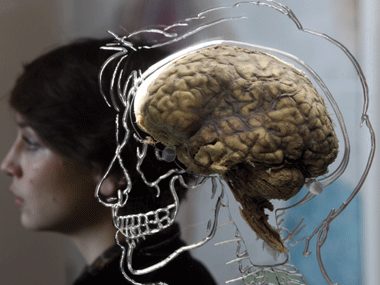Yesterday the Nobel Prize Committee in Switzerland announced the Noble prize in medicine for the year 2014. The winners were Professor John O’Keefe from University College London and the husband-wife pair of May-Britt Moser and Edvard Moser for discovering the brain’s internal GPS system. While O’Keefe first discovered how the brain’s internal positioning system works in 1971, May and Edvard then built on this research and in 2005 discovered another key component of this system called “grid cells.” So what is this GPS system and why does it matter so much? Place Cells that help us form maps Well for starters, let’s take a look at what O’Keefe’s work revealed to us. According to the
Nobel Prize org page
, he “discovered that a type of nerve cell in an area of the brain called the hippocampus that was always activated when a rat was at a certain place in a room.” He then came to conclusion that it was these “place cells” that helped the rat to “form a map of the room.”
O’Keefe’s research showed
that “‘place cells’ were not merely registering visual input, but were building up an inner map of the environment.” He concluded that “the hippocampus generates numerous maps”, which were based on the data collected by place cells and that these maps were stored in the brain for later use. However, it should be noted that when his research was first made public, there wasn’t a lot of excitement. According to this
Guardian
piece John Stein, a professor of physiology at Oxford University recalls that, “I remember how great was the scoffing in the early 1970s when John first described ‘place cells’ … ‘Bound to be an artifact’, ‘He clearly underestimates rats’ sense of smell’, were typical reactions.” [caption id=“attachment_941301” align=“alignleft” width=“380”] Representational Image. Reuters[/caption] Grid Cells that help judge distance and navigate Where the work of the Moser couple is concerned, they discovered the ‘grid-cells’ in 2005. According to this BBC
piece, these are like “lines of longitude and latitude, helping the brain to judge distance and navigate.” The grid cells are what create in the brain “coordinate system and allow for precise positioning and pathfinding,” according to official Nobel prize page. As part of their research, they noticed that certain cells would be activated in the rats when it passed through various locations and that they formed a unique pattern, like a grid. As this
graphic reveals
, these grid cells which are a part of the entorhinal cortex of the brain, work together with the place cells in the hippocampus and thus we get the comprehensive internal positioning system in our brains. So why does their research matter? This may help with research on Alzheimer’s disease where patients often lose their sense of directions, understanding of the environment and very often these parts of the brain are affected first in the disease. Not only can their research help with Alzheimer’s, it also showcases how the human brain executes complex cognitive functions.
Representational Image. Reuters[/caption] Grid Cells that help judge distance and navigate Where the work of the Moser couple is concerned, they discovered the ‘grid-cells’ in 2005. According to this BBC
piece, these are like “lines of longitude and latitude, helping the brain to judge distance and navigate.” The grid cells are what create in the brain “coordinate system and allow for precise positioning and pathfinding,” according to official Nobel prize page. As part of their research, they noticed that certain cells would be activated in the rats when it passed through various locations and that they formed a unique pattern, like a grid. As this
graphic reveals
, these grid cells which are a part of the entorhinal cortex of the brain, work together with the place cells in the hippocampus and thus we get the comprehensive internal positioning system in our brains. So why does their research matter? This may help with research on Alzheimer’s disease where patients often lose their sense of directions, understanding of the environment and very often these parts of the brain are affected first in the disease. Not only can their research help with Alzheimer’s, it also showcases how the human brain executes complex cognitive functions.
GPS system in the brain: How 2014 Nobel prize winners can help with Alzheimers
FP Staff
• October 7, 2014, 15:09:34 IST
Yesterday the Nobel Prize Committee in Switzerland announced the Nobel in medicine. The winners of the prize helped discover the brain’s GPS system.
Advertisement
)
End of Article